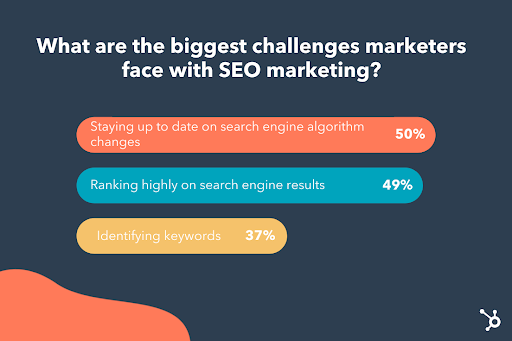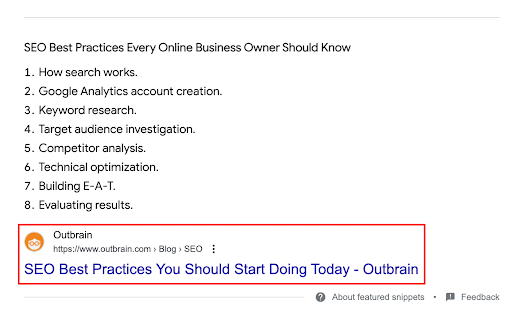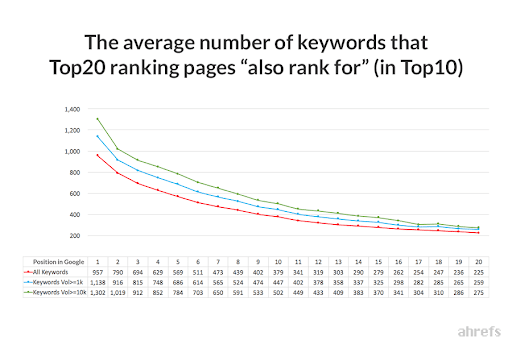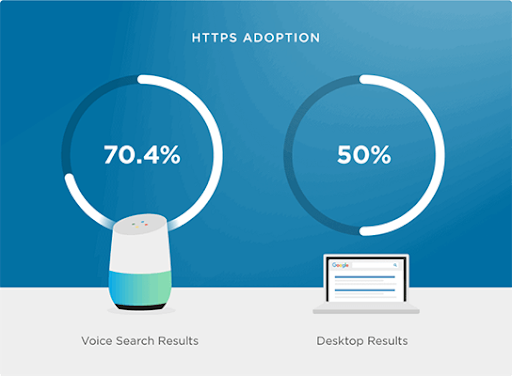How to Write Great SEO Titles in 5 Simple Steps

Did you know that over 50% of shoppers discover new brands through a Google search? As we step into an online world dominated by a growing e-commerce industry, it’s no surprise that site search engine optimization (SEO) has become a focal point for marketers all across the globe.
Brands can not afford to sit back and let their site do the talking. Instead, they must fight to get their content seen in the first place. With most consumers clicking on the first few results in a Google search string, how can brands ensure they’re making the first page?
From keyworded copywriting to UX optimization, there are plenty of ways to boost your site’s SEO. The question is, could your page titles, AKA title tags, be the key ingredient to SEO success? Let’s find out.
Addressing SEO Struggles In 2024
61% of top B2B marketers claim that SEO drives more site traffic than any other engagement strategy. SEO is the backbone of marketing success and should be a key focus for online marketers, especially in an era of tough competition.
On the back of the pandemic’s push for widespread digitalization, who isn’t online? Your brand may be open to a global pool of leads, but there are over a thousand identical business visions within every industry you can think of.
In 2024, just under half of all SEO marketers claim that their biggest challenge is ranking highly in a search engine result.

Source: Hubspot
For businesses hoping to climb up the search string, it could be time to address your internal SEO. Often, the reason brands fall below their competitors is down to their lack of on-site optimization. This includes your copywriting, navigation, page load speed, and page titles. Google takes every factor into account when ranking a website.
In this post, we’re going to teach you how to start polishing your SEO strategy from the inside out by upgrading your title tags. Not only are these the first thing a consumer sees, but they are essential in ensuring Google finds your site for the right queries.
Could Your Title Tags Save Your SEO?
Most of us brush past our title tags. While they seem straightforward, they can be great drivers of SEO success when written correctly.
Your title tag tells Google crawlers what to expect from a website. As an HTML element that provides a quick webpage description, it’s often the first thing your consumers will see when engaging in a Google search.
So, the more concise, catchy, and straightforward your titles are, the better they will be received by potential leads and, most importantly, Google’s ranking algorithm.

As you can see in this image, your title tag appears within the SERPs, headlining your webpage and enticing consumers to click on your content.
Your title tag is your first chance to make a good impression on a consumer, so adding keywords, your brand name, and a quick call to action is the answer to seeing positive results.
The key here is not to mix up your title tags with your H1 copy. While many beginners confuse the two, here’s a great way to differentiate:
- Title Tags: These titles are visible in the SERPs and will accompany your HTML when you share your webpage link.
- H1 Tags: This is your onsite title. For example, if you’re sharing a blog post, your H1 tag will appear as a headline at the top of the page, but only once the consumer has clicked on your site.
Are H1 tags also important for SEO?
While your H1 titles may not appear within the SERPs, they are still a significant driving factor of search engine optimization.
Your H1 title can be as creative as you want it to be. Without competing with search ads, meta snippets, and feature images in the same way a SERP title tag does, you have more freedom to produce a headline that makes your user want to keep reading.
Here are some of the key benefits you could see when optimizing your H1 titles:
- Satisfying search intent: Your H1 titles can aid both consumers and crawlers in understanding your content. In fact, Google uses an H1 title alone to help define the structure of a webpage and decide whether it satisfies a browser’s search intent.
- Improving user engagement: Your H1 title can improve a browser’s user experience, especially when it draws them into reading a full-page article. If your H1 title is enticing, your user will stick around for longer, reducing your page bounce rate.
- Confirming page content: Sometimes, Google can revise a title tag in a user’s SERP results. If an H1 tag contains the relevant keywords and CTA a browser is looking for, Google will use a page title as a title tag replacement.
If you don’t have a title tag, your H1 tags become all the more important. Did you know that when Google can’t find a title tag it uses your H1 tags to replace these 51% of the time?
With this in mind, let’s jump into how to write your own rank-worthy SEO titles in 2024.
How to Write Great SEO Titles in 2024
Over 200 signals make up Google’s ranking algorithm, so it’s important to optimize as many aspects of your website as you can.
Updating and enhancing your SEO titles is the best place to start as there are several no-fuss strategies to use to ensure that your website is more visible to Google’s algorithm.
Here are some ways you can prioritize SEO-friendly writing when crafting title tags and H1 titles.
Find your focus keyword to target
Before you jump into creating the perfect title tag or H1 page topper, it’s time to do some keyword research. If you’re looking to rank highly within a Google search, you must remember to target a keyword group that is likely to be searched for by your demographic.
The key here is to find your focus keyword first. Call this an umbrella term. Your focus keyword will be a generalized, high-performing keyword or phrase that directly links to the content you share.
It’s then time to get creative. While including your head keyword within your titles is advised, Google will also pick up on other related terms and variations, especially if your keyword has a high search volume.

Source: Ahrefs
Experts at Ahrefs found that the average #1 result could rank for up to 1000 keywords within their relevant niche, and these are often phrases that the site didn’t use.
While you must target one primary keyword, use this chance to fill your titles with other low-search variations and even some long-tail keywords if you want to share evergreen content.
Long-tail keywords are essential, as you can insert them into your content in a natural format, improving readability and improving SEO success.
Creating a title tag with high and low-search volume keywords is a great place to start.
Find a unique selling point
There is so much competition on Google, so you must ensure your titles stick out from the crowd.
Take a closer look at your content. What makes it unique? What can you do that your competitors can’t? Ensure your title tags enhance your branding strategy, sell your brand as a pioneer within its industry, and give a user a reason to click.
Most browsers examine several qualities when looking for the perfect search result. Depending on the query, some of the key points they will look out for include:
- Freshness: How relevant is your title today? Users tend to click on the most up-to-date search results.
- Depth: The longer your content, the better when it comes to ranking well amongst consumers. If you’ve got a long post ahead, tag the title with keywords such as ‘complete’, ‘ultimate’, or ‘step-by-step guide’.
- Brand names: If you’re well-known within your niche, ensure your brand name is in the title. Consumers are more likely to click on a result from a source they trust.
Prioritize a quick call-to-action
Did you know the average meta title ranges from just 50 to 60 characters? Even with such little space, it’s imperative that all vital information be included.
While creating an innovative title tag may seem exciting, save your creative site copywriting skills for your H1 tag. Make sure your title tag gives a brief description of your content and quickly provides a solution to your searcher’s query.
Every character counts, so keep ‘stop words’ to a minimum, such as ‘to’, ‘the’, and ‘in’, and instead prioritize keyworded phrases, persuasive wording, and simplistic language that provides a user with a quick call-to-action.
Remember to write for a human
Remember you’re writing for people, not a search engine. While keeping your titles keyword-heavy is essential, Google also prioritizes user experience. As a result, SEO-specific titles that are not people-oriented may be ranked further down.
The key here is to find the right balance. Overloading your title tags with keywords could make your brand appear untrustworthy and flag up to consumers as a spam site.
Site searchers should be the main focal point of your content. Google will consistently rank the sites with high levels of engagement at the top of a search string, so writing content that will attract your target consumers could see your SEO shooting for the stars.
Don’t forget about voice searchers
A relatively new phenomenon in the search world is voice search. While your title tags may be SEO friendly on desktop, you must optimize them to appear at the top of the SERPs for mobile users and voice searchers too if you want to see your ranking rise.
In 2024, a whopping 70% of searches are generated from a vocal query. Therefore, your title tags and H1 titles must prioritize these users.

Source: Blogging Wizard
The key here is to use conversational language within your H1 titles and tags. While desktop searchers are likely to input particular keywords, voice searchers speak in longer phrases.
Ensure that your titles match these phrases for a better chance of Google using a snippet of your article or blog post. To reinforce your voice search optimization, think of the types of questions your consumers may ask via voice search and find a way to incorporate the question and answer into your titles and first paragraph of text.
Next Steps
As we move into a new era of SEO, marketers must stay on top of ever-changing search trends.
Our advice is to refresh your titles, keywords, and call-to-actions frequently for an SEO strategy that keeps attracting new leads. The more searchable your business becomes, the quicker you’ll start succeeding in a densely populated playing field.











